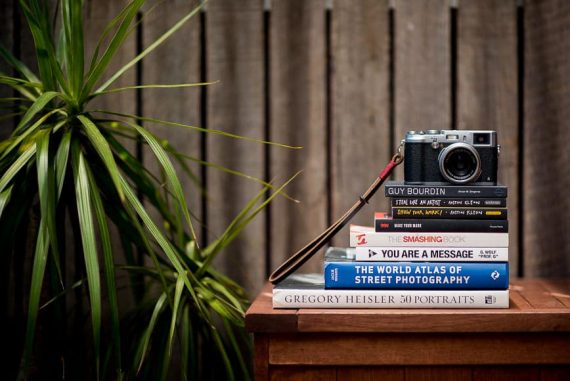
What is Commercial Photography (Guide + Tips)
Find out the best commercial photography tips in this must-read guide! Learn how to get started or take your shots to the next level.
Learn | Photography Guides | By Ana Mireles
Commercial photography has become a basic need for a business. Think about it, would you buy something you haven’t seen? Would you book a hotel that doesn’t display its facilities?
You probably wouldn’t, because we are used to seeing commercial photography everywhere. From banners on a website to billboards on the highway, commercial photography is a part of our daily lives.
Commercial photography services largely run the photography industry. So, if you’re thinking about entering the business, keep on reading to get a better idea of what it means, which areas you can specialize in, and some tips to hit the ground running.
What is Commercial Photography?
On stock photography websites, you have probably seen that photographs are divided between commercial use or editorial use.
Or maybe you’ve encountered the term commercial photography when you’re doing a marketing plan, or you’re researching possible photography clients to build your business.
In any case, at some point, you’ve probably wondered what is commercial photography?
The answer is quite generic; any photograph that’s made for selling something is considered commercial photography. Another way to define it is in comparison to what it isn’t.
So, it’s not the type of photography you make for yourself or keep as memories. It’s not intended to inform like documentary or editorial, and it isn’t fine art photography.
Therefore, commercial photography is a category that holds many types of photography and all sorts of subjects as long as it’s intended to build or promote a business, brand or product.
It can be anything from a business photoshoot all the way up to a billboard campaign.
What Types of Commercial Photography Are There?

Credit: Joshua Earle
As you can see, commercial photography is a very broad term that covers a wide range of possibilities. You can divide commercial photography in different ways, for example, by topic or by use.
Commercial Photography work by topic:
- Headshots – This is different from portrait photography because it’s used to build trust. Many companies like to use professional headshots to show their clients who they are. This applies to all sizes of companies and all employee levels. It’s a product that you can offer to everyone from a freelancer to the C.E.O. of a multinational company.
- Product Photography – Probably the most identified as commercial photography. These can be as simple as showcasing the product on a white background or as complex as a big production showing the product being used.
- Fashion Photography – Not many people think of fashion when you ask them about types of commercial photography because it’s considered a separate genre. And yes, it’s a stand-alone type of photography, but it’s made to sell a piece of clothing or a brand. Here you have everything from eCommerce shots to a high-fashion photo-shoot.
- Food Photography – If you’re thinking about all those yummy Instagram shots that we all know too well, you’re right, that’s one kind of food photography. You also have brochures from restaurants, product packaging, online menus from delivery services, and so much more.
- Real Estate Photography – The most common type of real estate photography is for selling or renting an apartment, an office, etc. But you can include here the photographs of a resort which is advertising for tourists, or the interior of a new designer shop.
Commercial Photography work by its use:
- Advertising photography – These images are more conceptual, and they should communicate a mood or a lifestyle. For example, a photograph of a beautiful model entering a bar where everyone looks at her enticed to advertise a perfume. You’re not showing her while she’s spraying the perfume on, you might not even show the bottle, you’re advertising it through her seductive attitude.
- E-Commerce – This type of product photography is more descriptive. It needs to show the product as objectively as possible. Often these photographs are done in sets where one of the images shows the product on a white background; another shows a detail; the other shows it in scale, and so on.
- Catalogue – The special characteristic of this type of photography depends on the product that you’re dealing with. However, when you’re photographing for a catalog, you need to think about the end-user. You’re building a story where the client can recognize themselves. It’s aspirational and should encourage cross-selling. For example, for a home decor brand, you should stage different setups where multiple products are used.
How Much Money Does a Commercial Photographer Make?
This is always a difficult question because it depends on your skills, location, and other factors. But in this case, it gets particularly complicated.
As you’ve seen, commercial photography can mean anything from photographing your neighbor’s crafts to a McDonald’s campaign. So, as a commercial photographer, your income depends also on what type of commercial photography you do.
Most commercial photographers work as freelancers. However, some companies employ in-house commercial photographers if they require a large number of photos each month.
In this case, you wouldn’t be pricing your photos or dealing with licenses; you would be an employee with a monthly salary. Research your area to determine the salary you would expect to receive.
However, if you run your own photography business, here are some sources that can give you an idea of how you can price your services.
Jobshadow.com published an interview with Sean Armenta, where he talks about different clients and how to quote them. If it is a small business, he recommends using a flat rate, and if it is a magazine, you need to fit their budget, and so on.
He also mentions that for the first two years of work as a commercial photographer, he didn’t make any money while he got credibility and built a portfolio. Then he increased his income every year, and now he makes $80 – $100k per year.
Fash.com has a very comprehensive guide on photographic pricing, from the type of photography to the level of expertise.
For commercial photographers, it states an average rate of $150 – $250 per image or $200 to $300 per hour.
How Much Do You REALLY Know About Photography?! 🤔
Test your photography knowledge with this quick quiz!
See how much you really know about photography...

Also, consider that a large portion of the income for a commercial photographer is tied to the licenses. In the end, it’s something that’s judged case by case. Think about the size of the business that you’re dealing with.
Consider how are they going to use your images. Don’t forget to take into account your expenses if you need to rent a location, pay the model, etc.
In the end, it comes down to balancing how much the client can afford and how much you want to earn. For more detailed stats on earning potential, you can check out our report: how much does a photographer make?
8 Commercial Photography Tips
Ok now you know what it is and how much you can charge, but you’re probably wondering how do I take a commercial picture?
Well, here are some tips to help you out.
1. Build your portfolio with care
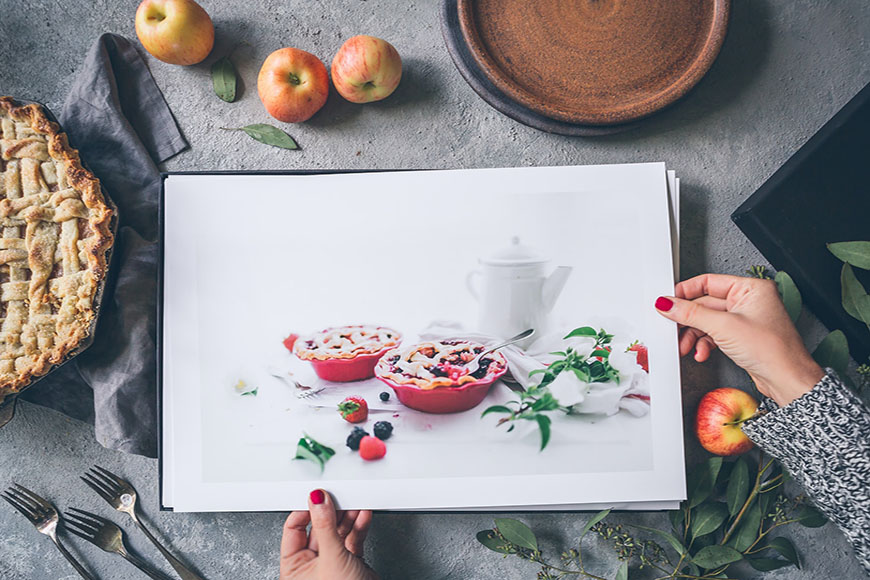
Credit: Brooke Lark
This tip might sound very obvious, but it’s one of the most important ones, and not many commercial photographers know how to do a good and effective commercial photography portfolio.
The portfolio needs to communicate to your client what you can do and therefore showcase range and variety but with their needs in mind.
That’s why my first advice is that you shouldn’t have only one portfolio. Commercial photography is a broad category, and a cafeteria owner won’t care how well you can photograph a car. In the same way, a car dealership doesn’t need to see your food photography skills.
So, it’s OK to have two or three areas of specialty, but then you have to build a photography portfolio for each one of them.
Also, don’t overdo it. Two or three types of photography are OK, but any more can be too much. Otherwise, it would be difficult for you to stand out as a photographer.
Back to your portfolio, only put high-quality images in it. You shouldn’t put images that are not up to standard just as filler.
Since I’m on the subject of filling a portfolio, 10 to 20 images should be enough. If you want to show more, use the website or your social media channels. Otherwise, the client won’t look at it, or not with the attention you want anyway.
If you haven’t had enough clients to create your portfolio, then do projects of your own. Do you know the saying “a chain is only as strong as its weakest link”? Well, your portfolio is only as strong as the weakest photo in it.
2. Start Small
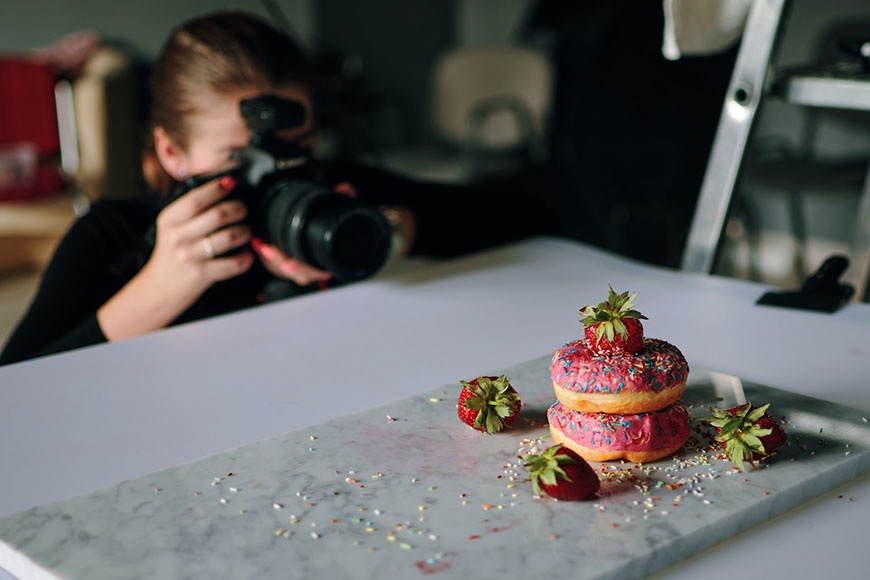
Credit: Szabo Viktor
A lot of photographers start their career thinking about the ideal job; in the case of commercial photography, you might be thinking about doing the campaigns for Coca Cola or Nike, or Samsung.
But try to land a big client when you’re just starting can be daunting because of all the things that need to be considered from production to licenses.
Not to mention that it can be difficult. Big companies usually go to agencies or well-known professionals. This can be a bit frustrating and ultimately work against you or cause you to give up.
When you’re starting your own photography business, take a look around, commercial photography is everywhere. You’ll notice every store, brand, company and professional needs it.
Try reaching out to the cafeteria where you usually get your coffee and see if they need any work done.
Visit the gym down the street and ask if they are planning on updating their website or have an upcoming promotion that they want to advertise.
If you know the business, then you already know their target audience and the products and services they offer. This will make it easier to translate the idea into images.
Also, they know you as a person, and not as a photographer. That goes a long way toward earning trust and having open communication.
Finally, it will take the edge off complicated licensing terms, photography contracts and other issues. If you are working with a big multinational, you’ll have to negotiate the territory, media, and time that they can use your work.
With local businesses, things are easier because they probably don’t have any interest in running an advertising campaign in a different country or anything like that.
So, think about all the possibilities around you. I’m not saying that you shouldn’t think about growing as a commercial photographer, I mean that you should widen your scope.
3. Follow the Brief
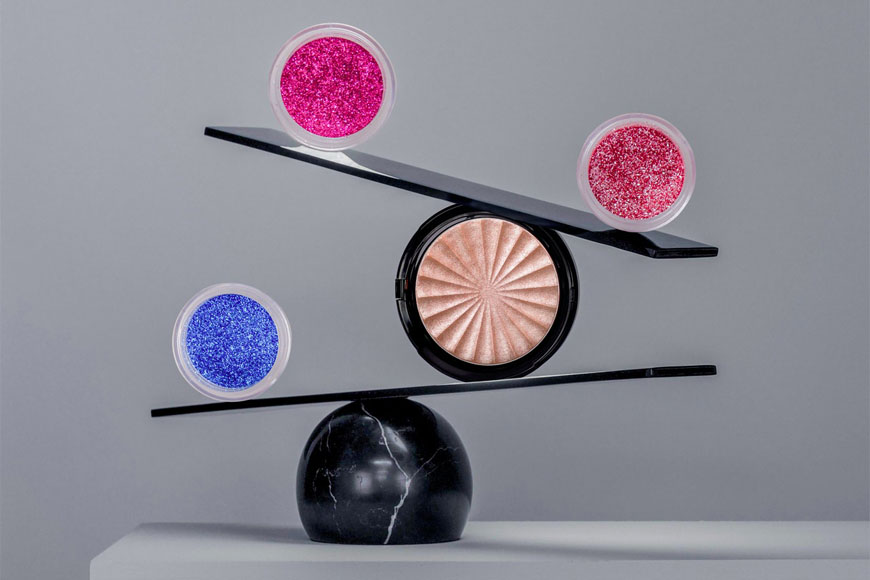
Credit: Venus HD Makeup & Perfume
As a photographer, you have a creative soul and an artistic vision. That’s something that you need to channel into developing your personal style.
However, in commercial photography, your skills and style are used to develop and translate your client’s ideas.
Most of the time, you receive a briefing explaining what they want you to do. This can be just a series of guidelines where you can have an input or a precise storyboard that you have to reproduce as it is. This depends on your client’s marketing strategy.
A very clear and fixed briefing can be frustrating for the artist in you, but it can make the work go smoother. When you know exactly what the client is expecting, it’s easier to plan, quote, produce, and post-produce.
If your client gives you a lot of free reins, you risk doing a lot of work to find out they wanted something completely different. This will cause a lot of changes or having to re-do the whole thing.
So, when you find yourself in a briefing where you’re not getting much information from the client, you need to ask for it.
Make sure they have a clear idea of what they want and need, then explain how you can deliver on those expectations. Only then you can get to work without risks of miscommunications.
4. Learn to plan and quote

Credit: Chuttersnap
Before I talked about how much money does a commercial photographer make. While we established that it’s very flexible, one thing that you should be very careful of is not to lose money on a job.
Beginner photographers often struggle with this because of bad planning. After you receive the client’s briefing and before you quote, consider everything that you’re going to need to make the photographs they want.
Do you need to rent a studio or location? If so, for how many hours? Do you need special equipment? For example, a camera with a higher resolution, or a special light, or a drone.
Are you going to need assistants or can you handle it on your own? The same goes for the retouching, is it something you can do, or will you hire a specialist?
Which props are you going to need? The list can go on and on, so, make a plan of action and make sure you include a budget for unforeseen expenses.
5. Define Usage License & Draw Contracts
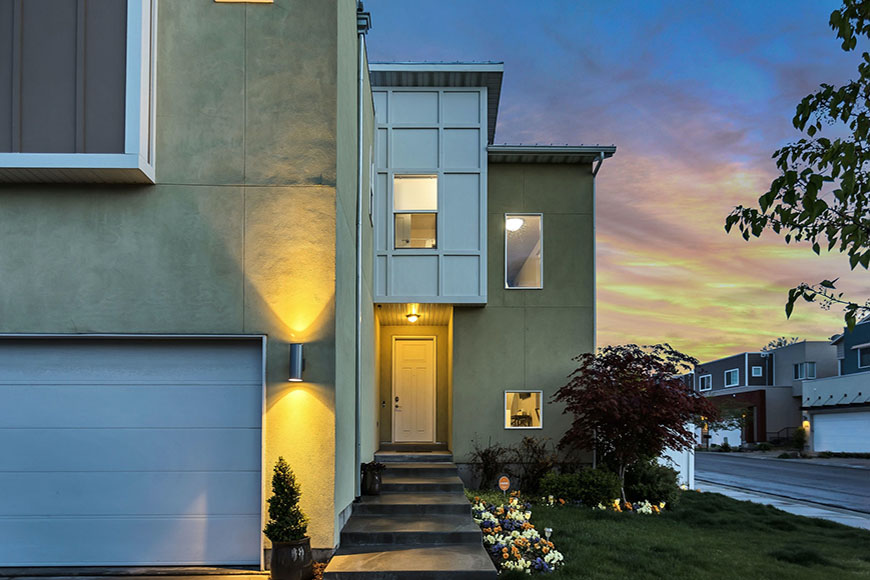
Credit: Brian Babb
I think this is one of the scariest things for new commercial photographers. It’s definitely more complicated than dealing with a private client that wants their maternity photos taken.
However, running a photography business is more than just taking photographs, and you have to take care of these types of things too. First of all, you should always have a contract, even if you’re just starting or you’re working for friends.
When you make photographs for commercial use, you should specify inside the contract how they can use your images. Can they be used online, printed, or both?
How long can they use them? Forever? Just for a season? There’s no hard rule about it, it’s not wrong to do one or the other, but you do have to specify it and get paid accordingly.
Who is going to keep the copyright? Can they use them locally or worldwide? These are just some of the most common usage license terms that need to be in the contract, but you can include anything you think is important.
For example, some photographers include a ban for the use of their images in a pornographic or offensive context.
If you can afford to get legal advice to write up the contract, it would be a wise investment. Otherwise, try to do some research and make it as clear as possible.
The payment terms are another big issue. Specify when and how you expect to be paid. Do you want payment upfront, or after the photography shoot?
Many companies have their own payment terms for commercial work. They will often consider a 30 to 90-day timeline for the payment.
See if their conditions are acceptable to you or try to negotiate a more suitable payment plan. Either way, get all these things sorted from the start and always put them in writing.
6. Master studio lighting

Credit: Sangria Señorial
Natural light is common in food photography, for example, but more often than not, commercial photographers work inside a studio or on location using artificial lights such as strobes and continuous studio lighting.
You must understand how to manage them and have some lighting setups in mind before you start the photoshoot.
These, of course, are not fixed and final. If you see that something is not working out, for example, if you’re having unwanted reflections or the brand’s logo is not well lit, you should be able to make the necessary adjustments.
As much as you plan, some experimentation is often required and can sometimes be a stroke of genius.
Keep in mind that small details can make a world of difference. Changing the color of the reflector to make the light warmer, adding an extra highlight to make the product pop, etc.
Also, be crafty. While professional equipment is required for commercial photography, sometimes you need a ‘hack’ to solve a problem.
These are the kind of things that will make clients come back and work with you again.
7. Build a strong team

Credit: Flaunter
Depending on the type of photography that you do, you’ll need more than a pair of helping hands.
An assistant can help out with lighting and overall duties throughout the photoshoot. Another key element on your team should be a good photo retoucher unless you have strong skills and can do this yourself.
Then, depending on the specialization and the size of production you may need a good food stylist, hairstylist, makeup artist, art director, someone for scout location, etc.
Of course, you won’t always need all of these professionals for each photoshoot. If you’re photographing a product, you don’t need stylists for the model, for example.
So I’m not suggesting that you hire them all, instead, build a strong network that you can count on and collaborate as needed.
8. Stay updated

Credit: Toa Heftiba şinca
Photographic styles, like anything else, are about trends. While minimalistic photographs are popular right now, they might not be the next year.
It will help if you stay updated on what’s in. Instagram and Pinterest are excellent sources to stay current on what the big brands and photographers are doing.
Browse through magazines and pay attention to posters and billboards. Television and movies are also a sign of what people want, even if they are different media.
Many organisations have yearly awards that reward the best of the year in photography, advertising, etc. Keep an eye on the finalists and winners to know what’s going on in your specialised area.
Plus, it’s not enough just to know these things, you need to show your clients that you are current with what they need. So, update your portfolio and website regularly.
Social media channels are a great way to do this. You can have an Instagram account where you publish new ideas, experiments, and images with a more casual feel.
Commercial Photography FAQs
What is considered commercial photography?
Any photography that’s done for marketing, sales or promotional purposes can be called commercial. This is in contrast to genres like editorial and documentary photography which aim to tell a story or document real-world events.
What types of commercial photography are there?
Many different types of photography can be considered commercial – it all comes down to the intent of the photos. While product photography is the most obvious, there are many others including food, fashion, architecture, portraits/headshots, and corporate photography.
What skills do you need to be a commercial photographer?
Firstly, a good grasp of the photography basics is essential as this will help you work with different subjects and lighting conditions. This includes knowledge of gear, settings, and post-processing programs. A good eye and creative flair are also important for realising commercial projects. Lastly, communication skills are imperative for dealing with clients.
Final Words about Commercial Photography
As you can see, becoming a commercial photographer is something that you can do regardless of your field of interest.
Since every business needs commercial images, you can approach it from different angles and reach out to brands and stores that handle products or services that you’re interested in.
So, I hope this article gave you a better idea of what to expect and how you can get started. Let us know your experiences and share your tips in the comments section.

Check out these 8 essential tools to help you succeed as a professional photographer.
Includes limited-time discounts.










